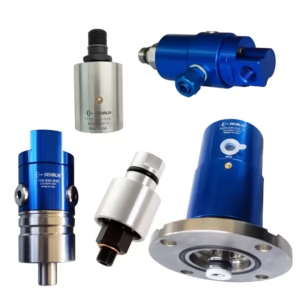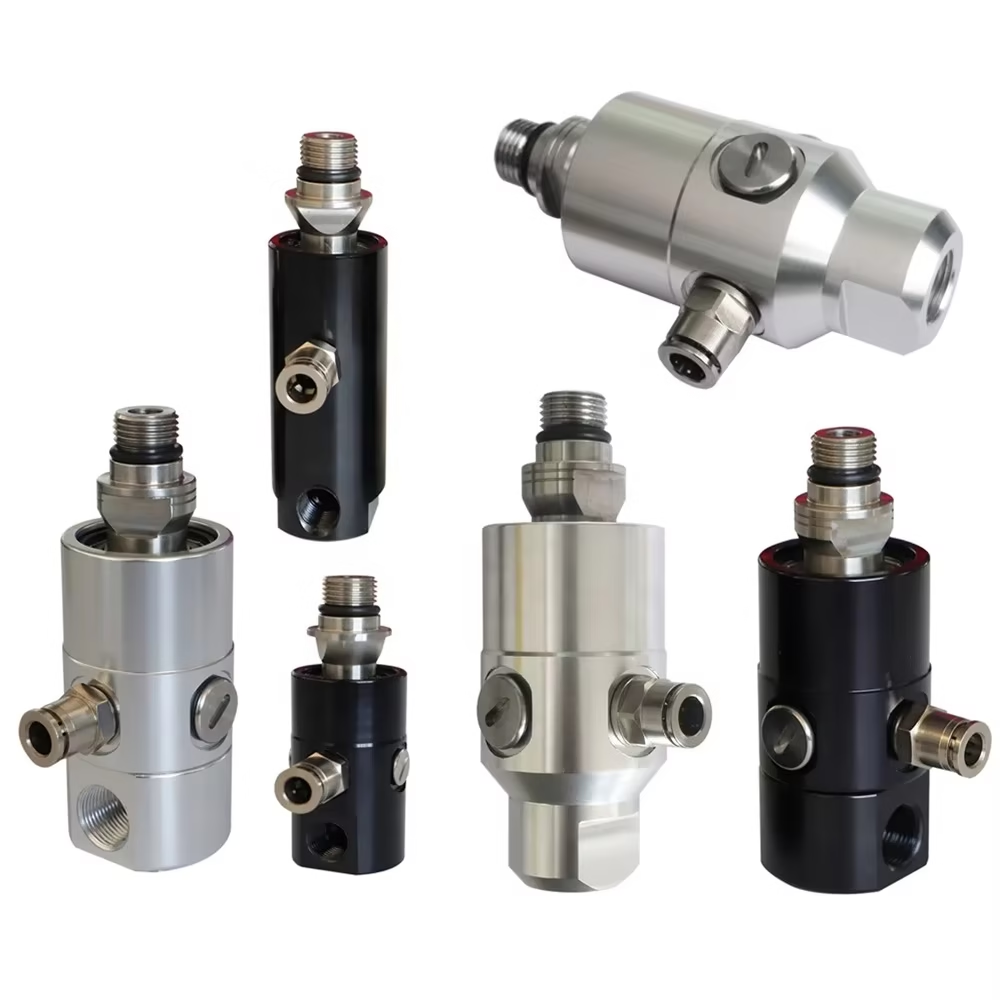Hydraulic Oil Rotary Union
Original price was: $100.00.$80.00Current price is: $80.00.
- Max Pressure: Up to 15,000 PSI (1,000 bar)
- Max Temperature: Up to 200°C (392°F)
- Rotational Speed: Up to 3,000 RPM
- Materials: Stainless Steel, Carbon Graphite Seals
- Seal Type: Balanced Mechanical Seals
Description




 Product Overview: Hydraulic Oil Rotary Union
Product Overview: Hydraulic Oil Rotary Union
Introducing our Hydraulic Oil Rotary Union, a critical component designed for the seamless transfer of hydraulic fluids in various industrial applications. Engineered to provide reliable and efficient performance, this rotary union connects stationary hydraulic sources to rotating machinery, ensuring uninterrupted fluid flow while maintaining system integrity.



 Key Features
Key Features
High Pressure and Temperature Ratings: Capable of withstanding pressures up to 15,000 PSI and temperatures reaching 200°C (392°F), our hydraulic rotary unions are built for demanding environments.
Robust Construction: Made from high-quality materials such as stainless steel and advanced sealing technologies, ensuring durability and resistance to wear and tear.
Leak-Free Operation: Featuring precision-engineered seals that minimize leakage, our unions enhance operational efficiency and reduce environmental impact.


 Applications
Applications
Manufacturing: Essential for machine tools, robotic arms, and assembly lines, providing continuous hydraulic power for optimal performance.
Construction: Used in cranes, excavators, and drilling rigs for precise hydraulic control and fluid transfer.
Agriculture: Powers irrigation systems and agricultural machinery, optimizing efficiency in farming operations.
Renewable Energy: Critical for wind turbines and solar trackers where efficient hydraulic control is necessary.
 What is a Hydraulic Rotary Union and how does it function?
What is a Hydraulic Rotary Union and how does it function?
A Hydraulic Rotary Union is a mechanical device that facilitates the transfer of hydraulic fluids between stationary and rotating parts of machinery. It operates by maintaining a sealed pathway that allows for continuous fluid flow while accommodating rotation, thus preventing leaks and ensuring efficient performance in hydraulic systems.
In which industries are Hydraulic Rotary Unions commonly used?
Hydraulic Rotary Unions are widely utilized in various industries, including:
Manufacturing: For machinery and robotic arms.
Construction: In cranes and excavators for precise hydraulic control.
Agriculture: In tractors and irrigation systems.
Renewable Energy: Used in wind turbines for efficient hydraulic control.
What advantages do Hydraulic Rotary Unions offer?
Continuous Fluid Transfer: They ensure uninterrupted flow of hydraulic fluids.
Reduced Downtime: Their reliable design minimizes maintenance needs.
Enhanced System Flexibility: They allow for movement and rotation of machinery components while supplying hydraulic power.
How do you select the right Hydraulic Rotary Union for your application?
Operating pressure and temperature requirements.
Type of hydraulic fluid being used.
Rotational speed and environmental conditions.
What are the different types of Hydraulic Rotary Unions available?
Single-Passage Unions: For simple fluid transfer applications.
Multi-Passage Unions: Allowing for multiple fluids or channels through one union.
Low-Speed Unions: Designed for applications with lower rotational speeds.
What role does precision engineering play in Hydraulic Rotary Unions?
Precision engineering is crucial for ensuring reliable performance and longevity in Hydraulic Rotary Unions. It minimizes wear and tear on components, allowing them to operate effectively under high pressures and temperatures, which enhances overall system efficiency.
Can Hydraulic Rotary Unions be customized for specific applications?
Yes, many manufacturers offer customization options tailored to specific operational requirements, including variations in size, pressure ratings, seal types, and configurations to suit unique applications across different industries.
What maintenance practices are recommended for Hydraulic Rotary Unions?
Regular inspections for wear on seals and bearings.
Ensuring proper lubrication where applicable.
Checking for leaks and replacing worn components as necessary.
How do Hydraulic Rotary Unions contribute to safety in industrial operations?
By minimizing the risk of leaks associated with high-pressure systems, Hydraulic Rotary Unions enhance safety in industrial operations. Their robust design ensures that hydraulic fluids are contained effectively during operation, reducing the chances of accidents or equipment damage caused by unexpected failures.
What innovations are emerging in Hydraulic Rotary Union technology?
Recent innovations include advancements in sealing technologies that improve durability under extreme conditions, multi-passage designs that allow simultaneous transfer of different media types, and integration of smart monitoring systems that provide real-time performance data to optimize operational efficiency.






